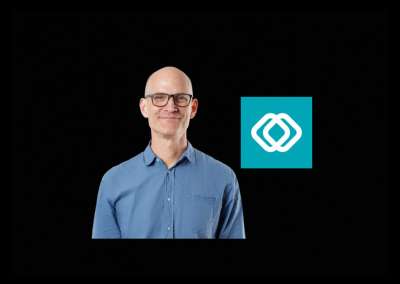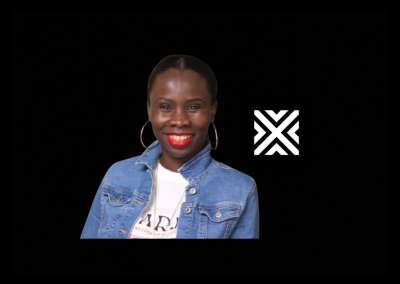Shiny New Object Podcast - Episode 320
Brands make the mistake of using numbers and segments without following through to decision making that makes a difference. Kajal Patel, Insights Manager at Ruggable, specialises in turning predictive analytics into real commercial decision making.
Her shiny new object is customer segmentation to predictive LTV (lifetime value). Kajal explains how important segmentation can be, but also its subtleties: it's about having meaningful cohorts where they behave so differently that a brand needs and wants to interact them differently. Marketers should move away from segmenting based on demographics or personas, and instead look at behaviours and interactions to get the most out of their customer data.
Kajal also explains how this relates to predicting a lifetime value for customers (in other words, the profitability of this customer to your organisation. "LTV isn't just a number, it's a prioritisation too," she tells us.
Tune in to the full episode to understand more about the use of customer segmentation and predictive LTV and get other top data driven marketing tips from Kajal.
Transcript
The following gives you a good idea of what was said, but it’s not 100% accurate.
Kajal Patel 0:00
So I always say, if a segment doesn't behave differently in metrics, it's not a segment, it's just decorative.
Speaker 0:12
Are you a fitness loving foodie? Then defy snacks is for you. Defy offers real high quality chocolate you love, combined with functional ingredients, giving you as much as 26 grammes of protein per bag. So you can be both a little bit bad and a little bit good at the same time as a female owned brand, defy dedicates a portion of its profits to other women owned businesses currently sold in the US. You can find us on defy with an i snacks.com and follow us on social at defy snacks.
Speaker 1 0:45
Hello and welcome to the shiny new object podcast. My name is Tom Ollerton. I'm the founder of Automated Creative, the creative effectiveness ad tech platform, and this is a weekly podcast about the future of data driven marketing. Every week or so I have the privilege and the pleasure of interviewing one of our industry's leaders about the future of data driven marketing, and this week is no different. I'm here in person, which is always fun with Kajal Patel, who is insights manager at Ruggable. Last time we saw each other, we were on stage at Madfest talking about AI. So it's brilliant to have you here again, but there will be people listening to this podcast who may have not met you. So can you give us a bit of background into who you are and what you do?
Kajal Patel 1:27
Hi, yeah. So I'm a strategic data growth leader with over 10 years experience at brands like Farfetch, Mr. Porter and ruggable, so I specialise in turning predictive analytics into real commercial decision making, particularly around customer segmentation, LTV and experimentation. So all the buzzwords.
Speaker 1 1:52
So before we get into your shiny new object, what have you spent your own time, energy or money on that's improved your work life.
Kajal Patel 2:05
Okay, so this may sound a bit of a shocker, but for me, it's noise cancelling headphones, and it's not to focus, it's actually so I can ignore the Slack pings while I pretend to build my predictive models, but actually what I'm doing is using that time to think, because I feel like when you are coding prior to doing that, you just need to kind of zone away and just have that ability to think. And I'm actually really excited my new Apple pods are coming within two hours.
Speaker 1 2:40
So why don't you just turn off the notifications? Why just turn your computer on mute? Why do you need noise cancelling headphones?
Kajal Patel 2:46
Because of other people talking in the background as well. So I quite like the joy of like seeing other people while I'm working, but then I also want the ability to mute everyone.
Speaker 1 2:56
Well, Bose have been a client of ours for the best part of seven years, and so I think you've bought the absolute wrong headphones. You need to get the new QC, UHS. They're unbelievable. I've got... look at them. They're beautiful. They are. My issue with the Apple headphones is that they end up looking like Princess Leia with big potatoes on the side of your head. But, uh, you know what? Anyway, it's not that podcast. So what is your best bit of advice for someone to become a better data driven marketer.
Kajal Patel 3:24
I actually like this question, and it's quite personal to me in a way. I will say, don't ask your analyst for numbers. Ask them what they'll do differently because of those numbers. If they don't give you an answer, that's not insight, that's just reporting, and there's a huge difference between the two.
Speaker 1 3:40
So I've been saying this a lot recently, that if data doesn't inspire an action, it's a distraction. So can you give us a story or an anecdote about that when someone's come to you and said, I need to know what the ABC is, and you've gone what you're but why? What you do with that number? Could you help the audience understand that from a story perspective?
Kajal Patel 3:59
Yeah, I think very early in my career, I would say I fell into the trap of delivering what was asked for. So they'll say, Kajal, can we have x, y, z, split in these different kind of dimensions, and I would deliver it, and then they would come back and ask for more cuts. And then the key is to kind of interject and say, Okay, what is the objective here? What's your hypothesis? What are you trying to get out of it? And then you can slice and dice the data, however way you feel as a, as a kind of specialist in the field, to deliver that insight to the to your stakeholder.
Speaker 1 4:48
So we're now going to talk about your shiny new object right, which is me wildly out of my depth here, so I'm looking forward to learning from you and your shiny object is customer segmentation to predictive LTV, right? So I know what all those words mean individually. What do they all mean together? What is it? Give me the elevator pitch for that, and why have you chosen that as your shiny new object?
Kajal Patel 5:10
Yeah, sure. So segmentation is about looking at your customer and cohort, and it's not just slicing them in equal kind of quantile quartiles or equal kind of groupings. It's about having meaningful cohorts where they behave so differently that you want to interact and talk to them very differently, and in turn, get the most out of them. Predictive LTV is something that every single company would aspire to kind of know in terms of a golden metric, which is, how much is this customer worth, and how much are they worth spending to acquire. And so it essentially allows you to protect your gross margin profits.
Speaker 1 6:05
So you've worked heavily on segmentation, but people can often treat that as like a marketing thing. So how would you define it more specifically?
Kajal Patel 6:13
So to me, segmentation isn't about sticking labels on customers. It's about treating them differently for good reasons. So at Farfetch, I worked with ultra high net worth clients. Segmentation wasn't demographics based. We looked at psychology through spending patterns. One of my favourite examples is someone might spend $500 on their first order. But what they spend, what they spend it on, tells you everything. So $500 on a coat, I mean, that could just be a one off treat. $500 on socks, that's like a statement about their mindset. So we worked along with like data science, data scientists to build a prospecting model to flag these behaviours really early so our high touch teams could step in before customers showed value on paper, and in turn, like drove incremental revenue. But segmentation at like, Ruggable, for example, it's a bit different. It's not about like share volume or frequency. People don't buy rugs every week. So as well as segmenting by how often they shop, we segmented by purchase cadence and then elasticity. In other words, we ask who will buy anyways, and who's actually, who actually needs that nudge. And then that lets us protect our margin, as I mentioned, you know, by not over discounting on your loyal buyers, but also like rewarding your loyal buyers where needs be in order to help your retention. So I always say, if a segment doesn't behave differently in metrics. It's not a segment, it's just decorative.
Speaker 1 8:04
Can you just expand on that a little bit? I think that's a really important point.
Kajal Patel 8:08
So I think, like, you know, a lot of companies would want to have personas against their segments, and this isn't looking at their spending behaviour, it's looking at the intent, which has its place as well. You know, it helps marketing to kind of get the tone and, you know, the way they communicate to the customers. But essentially, everyone has a North Star metric, and majority of the time that leads towards money, revenue, profit. And in order to get that of your customers, you need to understand which are... which customers are going to give you the most money, and which ones are probably not worthwhile interacting with because they've already churned.
Speaker 1 8:59
This episode of the shiny new object podcast is brought to you in partnership with Madfest, whether it's live in London or streamed online to the global marketing community, you can always expect a distinctive and daring blend of fast paced content, startup innovation pitches and unconventional entertainment from Madfest events. You'll find me causing trouble on stage, recording live versions of this podcast and sharing a beer with the nicest and most influential people in marketing. Check it out at www.madfestlondon.com.
Speaker 1 9:36
So we talked about clothes, talked about rugs. Is this specific to those two verticals, I assume not, but I know like, Would it work in FinTech or something like that?
Kajal Patel 9:46
Absolutely, I think FinTech needs segmentation the most. In E-commerce, segmentation helps decide where to spend your marketing budget; in FinTech, I think light segmentation will help decide where to spend your trust. So take Monzo, for example. They have millions of customers, but fair doesn't mean identical, like with better behavioural segmentation, I think like they could personalise their card limits or credit access, so not just based on income, but also their repayment psychology. I mean, you know, two customers earning 40k may behave completely differently. I mean another segmentation, like another tactic they could think about, is tailoring their savings prompts so people need... some people need motivation. Others need structure. So why send the same save more notifications to everyone? So segmentation, it shouldn't just be a reporting view. It should be like an operational switchboard.
Speaker 1 10:54
So we've spent some time on segmentation, so thanks for schooling me on that. That's great. So now the predictive LTV bit and decision making. So LTV acronym, it's a Do you know it's a TLA? Are you aware of this three letter acronym? There you go, nice and so, so is it? LTV is a TLA, My God, how would you make it practical?
Kajal Patel 11:18
Yeah, so LTV is really interesting. Like, I've, you know, being at the wide variety of companies that I have been with, the I hear LTV all the time. It's just interesting the way I see LTV. So it's often used as a PowerPoint graph rather than a decision engine, and my role is, if your LTV model doesn't tell you who to invest in, who to leave alone, who to re engage, it's not an LTV model. It's just a vanity metric. At Farfetch, for example, we we used that insight from our prospecting model, as I mentioned when we built the model looking at our ultra high net worth individuals, and then we use, we use that insight to build our predictive LTV model and redirected human outreach incentives, and then, like acquisition bidding towards the right kind of spenders, not just the biggest so that's how, you know, LTV became our profit engine and not just a reporting metric. And that's why I would say it was done really well. What I'm trying to say is, like, LTV isn't just a number, it's like essentially a prioritisation tool, and that's how companies should look at it.
Speaker 1 12:44
So how would someone know that they've got LTV wrong? So if you were going to arrive in an organisation and they open the books to you, what are the alarm bells that you would notice that someone who's listening to this could think about when looking at their own organisation.
Kajal Patel 13:04
Yeah, that's really interesting. And I think you're kind of putting me on the spot here, but I think like, if it's not a forward, predictive LTV, and it's a retrospective LTV, it's very hard to prioritise because you don't know what that customer's next move is going to be. Customers behave... behaviours change over time. For example, order frequency can increase later on. And this can be a behavioural pattern trigger that you pick up in a model, and it's something that forward predictive LTV models would actually look at and assign a future revenue to this customer. So I think essentially, if it's not a predictive LTV and you can't prioritise your strategies according to these customers' metrics, I would essentially say it's not going to be that useful.
Speaker 1 14:11
So what's been really interesting about this conversation, for me is that everything comes back to business. Everything comes back to revenue with you and and some people's view of an analytics function is it's those weirdos that sit out the back and crunch all the numbers, right? But you're, you're, you're talking to CEO language here, right, as well as a marketing one. So, so how do you, how do you balance that data science rigour, which is very difficult for some people to get their heads around with business spend?
Kajal Patel 14:45
Yeah, I think that's a really, really interesting question, and it's a great question. Thank you. I always start by asking what decision needs to be made and how long is it okay to be. So by that, what I mean is, for example, if it's like if we're doing, if there's an initiative around pricing, or some sort of incentives or TV spend, when I think about my approach, it would be full rigour. So do you know, in like a data science language, I would, I would go for course or inference over here, if it's a banner copy or button colour change, and they want some sort of insight, I'm not going to, you know, wait for the experiment to reach significance after eight weeks, or just wait for some sort of directional read. So what I'm trying to say is like, you can't hold a checkout banner test and a multi million pound campaign to the same statistical standard, and it's essentially understanding what needs, what decision, and what level of that decision, the company or the your stakeholders need in order to unblock that world map.
Kajal Patel 14:45
So what I want to do is get a better understanding of your perspective when it comes to the mistakes that other people make, that you've worked with historically. What are those marketing behaviours that you see that you're like, Oh, why are they doing that? And we've talked about a few already. Like, don't ask for data unless you're going to do something with it. What is the what is the story? But the feedback I get on this podcast is, is people like it when they're there's like, practical advice, like, what should, what should I be looking out for? Like, what are those behaviours in the teams that you have worked on historically, where you think, like, if the only you did this differently, we'd get a better result out of you.
Kajal Patel 15:35
I think, like, um, historically. And, you know, I think this can be quite common, is occasionally someone will come along and they'll have a strong intuition. And when you pull insights and it goes against the intuition, it feels like a big battle. And sometimes I think, like, I never want to use my... the role of analytics isn't to be a weapon. It's more to help be that decision engine. I always actually say, like, data is the neck of the company, because it helps the head move in whichever direction you want, because data can be that engine, and essentially you can, like, work along with it. It's not there as like a weapon.
Speaker 1 17:49
I love that. That's such a nice articulation to finish with. So the data is not a weapon. It's like the neck, and it helps to point the head in the direction that the whole thing needs to go in. So it's perfect. So if someone wants to get in touch with you about anything that we've talked about, where is the right place to do that and what makes a message that you'll actually respond to?
Kajal Patel 18:09
Yeah, if you want to get hold of me, I'm sure we can share my LinkedIn page, and I'm more than happy to have any chats with anyone, really.
Speaker 1 18:20
But what makes a message you'll respond to that, because you will get inundated with messages after this. So I want to know what, what you want to see in that first line that will make you read and reply?
Kajal Patel 18:29
That I have the best advice ever.
Tom Ollerton 18:34
Kajal, thank you so much for your time.
What Next?
Subscribe to our YouTube channel
Listen to our ‘Shiny New Object’ Podcast on Apple Podcasts, Spotify and Soundcloud.
Want to stay updated with the latest industry news?
Subscribe to our newsletter and we will keep you posted.

The Under Net & Being Data Led with PMG's Jason Hartley
09.10.2025When Steve Jobs held up the first iPhone, there weren't a lot of people thinking taxis would be in trouble. Yet, the future brought apps and automation - so what is next for data driven marketing? Jason Hartley talks about the under net.

Moving Slow to Move Fast with Data as Momentum - with VML's Kiessé Lamour
25.11.2025Data should be a GPS, not a report card - make it empower your performance, not do a post mortem.

Skateboarding for Better Marketing - with Newcastle University's Matt Horne
06.11.2025Find a mindset changer to develop skills for marketing and for life.
